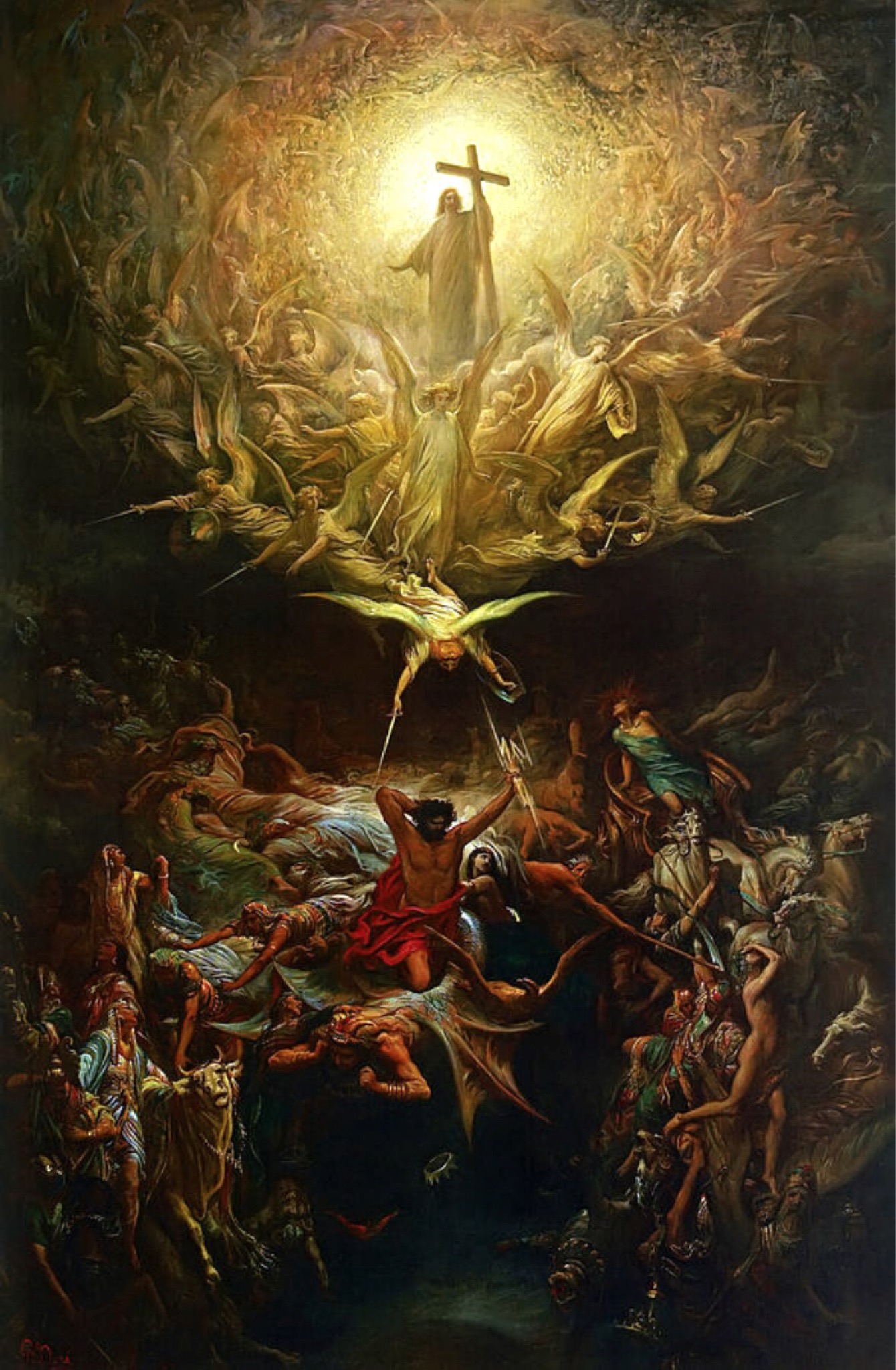 The Triumph of Christianity Over Paganism, Gustave Doré, (1899)
The Triumph of Christianity Over Paganism, Gustave Doré, (1899)
“WHAT do you mean that the Blessed Mother will “triumph”?” asked one puzzled reader recently. “I mean, the Scriptures say that out of the mouth of Jesus will come ‘a sharp sword to strike the nations’ (Rev 19:15) and that ‘the lawless one will be revealed, whom the Lord Jesus will kill with the breath of his mouth and render powerless by the manifestation of his coming’ (2 Thess 2:8). Where do you see the Virgin Mary “triumphing” in all of this??”
A broader look at this question may help us understand not only what the “Triumph of the Immaculate Heart” means, but also, what the “Triumph of the Sacred Heart” is as well, and when they occur.
THE CLASH OF TWO KINGDOMS
The past four hundred years since the birth of the “Elightenment” period has seen, in essence, a growing confrontation between the Kingdom of God, and the kingdom of Satan, with the Kingdom of God to be understood as Christ’s reign in His Church:
The Church “is the Reign of Christ already present in mystery.” —Catechism of the Catholic Church, n. 763
The kingdom of Satan has subtly and stealthily grown into what can rightly be understood as the secular “State”. 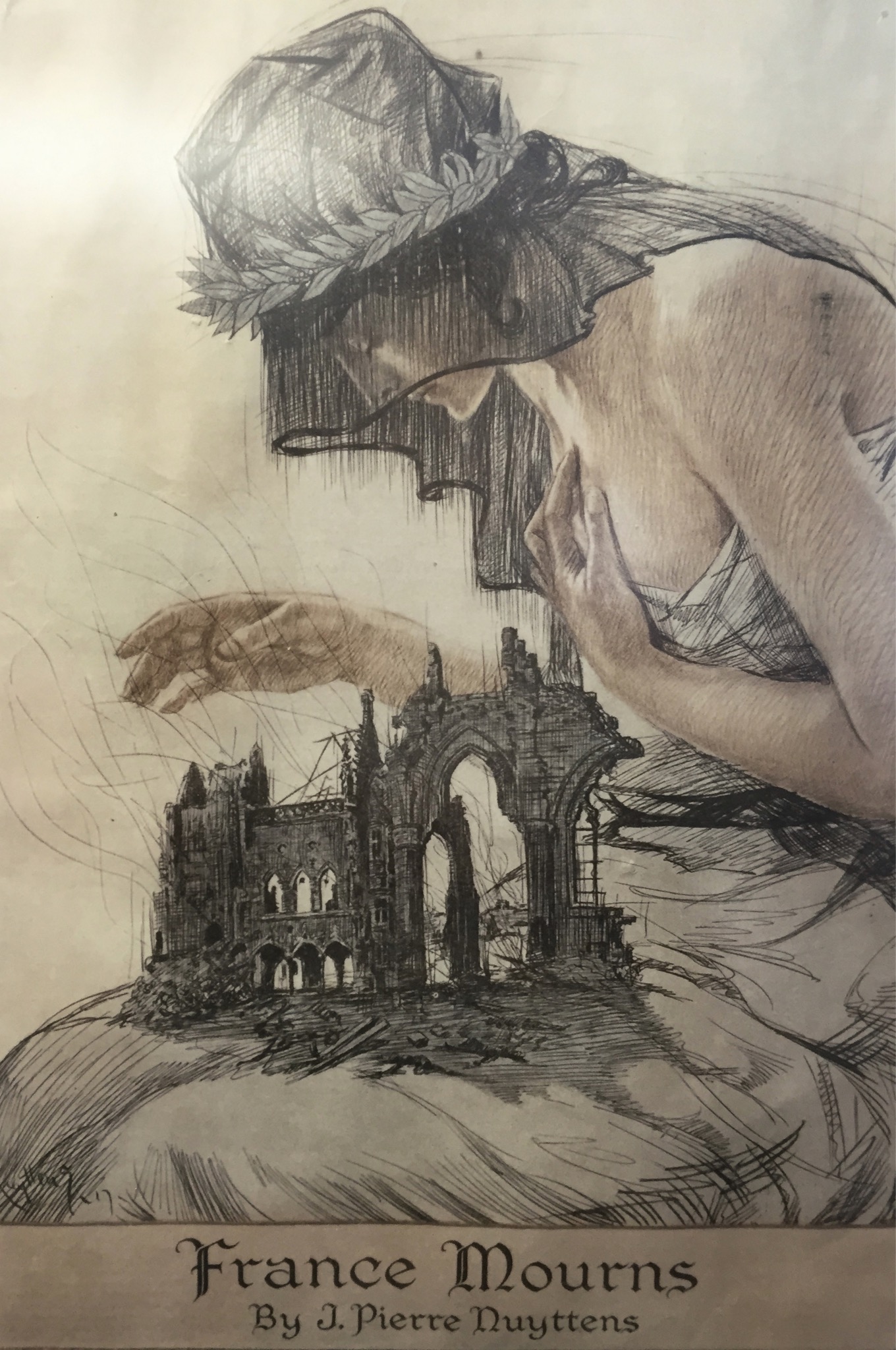 And hence, today, we see the increasingly volatile “separation” of Church and State that began with the French Revolution. The recent Supreme Court Decision in Canada to legalize assisted-suicide and the Supreme Court’s decision in the United States to redefine marriage being just two examples of the divorce between faith and reason. How did we get here?
And hence, today, we see the increasingly volatile “separation” of Church and State that began with the French Revolution. The recent Supreme Court Decision in Canada to legalize assisted-suicide and the Supreme Court’s decision in the United States to redefine marriage being just two examples of the divorce between faith and reason. How did we get here?
It was in the 16th century, at the beginning of the Enlightenment, that Satan, the “dragon” (cf. Rev 12:3), began to sow lies in the fertile soil of discontent. For Jesus told us precisely how the enemy of souls operates:
He was a murderer from the beginning… he is a liar and the father of lies. (John 8:44)
Thus, through lies, the dragon began the long process of building a culture of death.
But also, at that very same time, Our Lady of Guadalupe appeared in what is now modern-day Mexico. When St. Juan Diego saw her, he said…
…her clothing was shining like the sun, as if it were sending out waves of light, and the stone, the crag on which she stood, seemed to be giving out rays. —Nican Mopohua, Don Antonio Valeriano (c. 1520-1605 A.D,), n. 17-18
This “Woman clothed in the sun” appeared in the midst of a veritable culture of death where human sacrifice was teeming. Indeed, through her miraculous image left on St. Juan’s tilm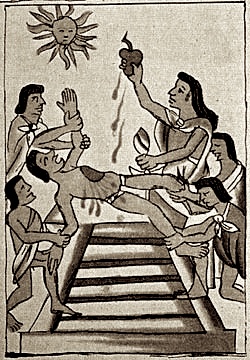 a (that remains hanging in a Basilica in Mexico till this day), millions of Aztecs converted to Christianity thereby crushing the culture of death. It was a sign and foreshadowing that this Woman had come to triumph over the dragon’s ultimate assault on humanity.
a (that remains hanging in a Basilica in Mexico till this day), millions of Aztecs converted to Christianity thereby crushing the culture of death. It was a sign and foreshadowing that this Woman had come to triumph over the dragon’s ultimate assault on humanity.
The stage was set for a tremendous battle between the “Woman” and the “dragon” over the following centuries (see A Woman and a Dragon) that would see errant philosophies such as rationalism, materialism, atheism, Marxism, and Communism gradually move the world toward a veritable culture of death. Now, abortion, sterilization, birth control, assisted-suicide, euthanasia, and “just war” are considered “rights”. The dragon, indeed, is a liar and a murderer from the beginning. Hence, St. John 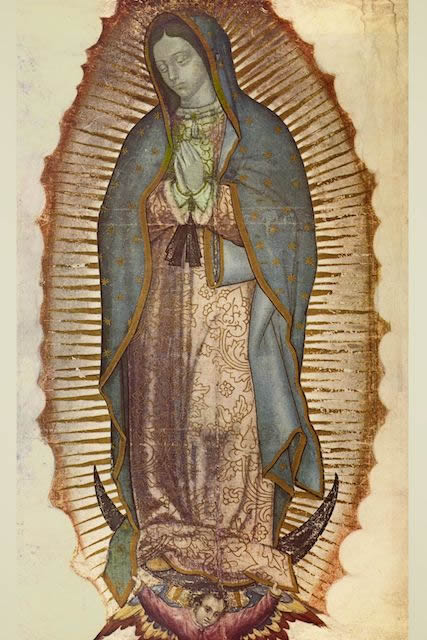 Paul II boldly announced that we had entered into the biblical apocalyptic era recorded in Revelation:
Paul II boldly announced that we had entered into the biblical apocalyptic era recorded in Revelation:
This struggle parallels the apocalyptic combat described in [Rev 11:19-12:1-6, 10 on the battle between” the woman clothed with the sun” and the “dragon”]. Death battles against Life: a “culture of death” seeks to impose itself on our desire to live, and live to the full… —POPE JOHN PAUL II, Cherry Creek State Park Homily, Denver, Colorado, 1993
It is the apocalyptic clash of two kingdoms.
We are now standing in the face of the greatest historical confrontation humanity has gone through… We are now facing the final confrontation between the Church and the anti-Church, of the Gospel and the anti-Gospel. This confrontation lies within the plans of divine providence. It is a trial which the whole Church… must take up… a test of 2,000 years of culture and Christian civilization, with all of its consequences for human dignity, individual rights, human rights and the rights of nations. —Cardinal Karol Wojtyla (JOHN PAUL II), reprinted November 9, 1978, issue of The Wall Street Journal from a 1976 speech to the American Bishops
THE FIRST TRIUMPHS
Just weeks before the birth of Communism, Our Lady of Fatima appeared announcing that, when Russia would be consecrated to her, it would lead to the “Triumph of the Immaculate Heart” and that the world would be granted a “period of peace.” What does this mean? [1]for a detailed explanation of the Triumph of the Immaculate Heart, see the The Triumph – Part I, Part II, and Part III
First, it is clear that Mary’s role in salvation history is intimately tied to the work of her Son to bring about the “restoration of all things.” [2]cf. Eph 1:10; Col 1:20 As the ancient saying goes, “Death through Eve, life through Mary.” [3]Catechism of the Catholic Church, n. 494 Thus, we can rightly say that Mary also “triumphed” over evil insofar that 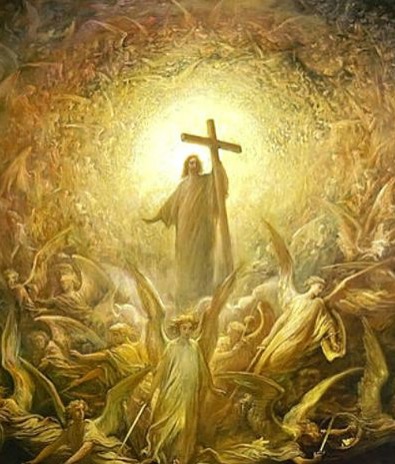 she co-operated with the Father’s plan to bring the Savior into the world. There was no “Plan B”. Mary’s fiat was “Plan A”—and the only plan. Thus, her “yes” to God was indeed a great and “first” triumph through her co-operation in conceiving and giving birth to the Savior. Through the Incarnation, Christ could then triumph by offering on the Cross the flesh He had taken from the Woman so as to obliterate the power of death against mankind…
she co-operated with the Father’s plan to bring the Savior into the world. There was no “Plan B”. Mary’s fiat was “Plan A”—and the only plan. Thus, her “yes” to God was indeed a great and “first” triumph through her co-operation in conceiving and giving birth to the Savior. Through the Incarnation, Christ could then triumph by offering on the Cross the flesh He had taken from the Woman so as to obliterate the power of death against mankind…
…nailing it to the cross [and] despoiling the principalities and the powers, he made a public spectacle of them, leading them away in triumph by it. (cf. Col 2:14-15)
Thus, the “first ” triumph of Christ came through His Passion, Death, and Resurrection.
Now, I say “first” regarding the triumph of the Two Hearts of Jesus and Mary because the body of Christ, the Church, must now follow the Head…
…she will follow her Lord in his death and Resurrection. —CCC, n.677
And as St. John Paul II taught:
The reality of the Incarnation finds a sort of extension in the mystery of the Church—the Body of Christ. And one cannot think of the reality of the Incarnation without referring to Mary, the Mother of the Incarnate Word. —Redemptoris Mater, n. 5
Since she is “a mother to us in the order of grace”, [4]cf. Redemptoris Mater, n. 22 there likewise is coming a “second” triumph, not only for Christ, but for Mary as well. For she…
… “cooperated by her obedience, faith, hope and burning charity in the Savior’s work of restoring supernatural life to souls.” And “this maternity of Mary in the order of grace… will last without interruption until the eternal fulfillment of all the elect.” —ST. JOHN PAUL II, Redemptoris Mater, n. 22
What are these “second” triumphs?
THE SECOND TRIUMPHS
If her first triumph was the conception and birth of her Son, her second Triumph will likewise be the conception and birth of His whole mystical body, the Church.
The “conception” of the Church began beneath the Cross when Jesus gave the Church to Mary and Mary to the Church, symbolized in the person of St. John. At Pentecost, the birth of the Church began, and continues. For as St. Paul writes:
...a hardening has come upon Israel in part, until the full number of the Gentiles comes in, and thus all Israel will be saved. (Rom 11:25-26)
That is why St. John, in Revelation 12, sees this Woman in labor:
She was with child and wailed aloud in pain as she labored to give birth… to a male child, destined to rule all the nations with an iron rod. (Rev 12:2, 5)
That is, the whole body of Christ, Jew and Gentile. And…
…they will be priests of God and of Christ, and they will reign with him for [the] thousand years. (Rev 20:6)
However, lest we confuse this spiritual reign with the heresy of millenarianism, [5]cf. Millenarianism—What it is, and is Not which erroneously presumed that Christ would come in person on earth and establish a physical kingdom, this reign would be spiritual in nature.
The Church of the Millennium must have an increased consciousness of being the Kingdom of God in its initial stage. —POPE JOHN PAUL II, L’Osservatore Romano, English Edition, April 25th, 1988
Christ dwells on earth in his Church…. “on earth, the seed and the beginning of the kingdom”. —Catechism of the Catholic Church, n. 669
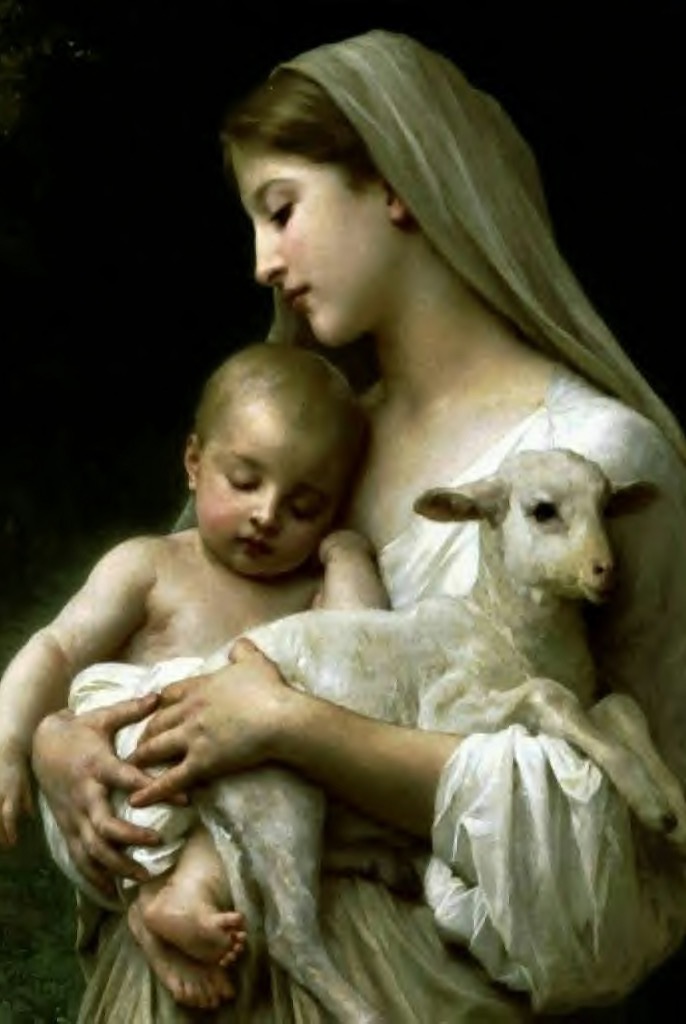 Thus, Mary’s Triumph is to prepare a people, who like her, will welcome within their hearts the reign of the Kingdom of God on earth as it is in heaven. Thus, says Pope Benedict, praying for the Triumph of the Immaculate Heart…
Thus, Mary’s Triumph is to prepare a people, who like her, will welcome within their hearts the reign of the Kingdom of God on earth as it is in heaven. Thus, says Pope Benedict, praying for the Triumph of the Immaculate Heart…
…is equivalent in meaning to our praying for the coming of God’s Kingdom. —Light of the World, p. 166, A Conversation With Peter Seewald
So, one could say that the Triumph of the Immaculate Heart is the interior coming of the Kingdom of God while the Triumph of the Sacred Heart is the exterior manifestation of the Kingdom—the Church—in all nations.
The mountain of the Lord’s house shall be established as the highest mountain and raised above the hills. All nations shall stream toward it. (Isaiah 2:2)
The Catholic Church, which is the kingdom of Christ on earth, [is] destined to be spread among all men and all nations… —POPE PIUS XI, Quas Primas, Encyclical, n. 12, Dec. 11th, 1925; cf. Matt 24:14
It is a restoration of all things in Christ, as St. Peter foretold:
Repent, therefore, and be converted, that your sins may be wiped away, and that the Lord may grant you times of refreshment and send you the Messiah already appointed for you, Jesus, whom heaven must receive until the times of universal restoration… (Acts 3:19-21)
Oh! when in every city and village the law of the Lord is faithfully observed, when respect is shown for sacred things, when the Sacraments are frequented, and the ordinances of Christian life fulfilled, there will certainly be no more need for us to labor further to see all things restored in Christ… And then? Then, at last, it will be clear to all that the Church, such as it was instituted by Christ, must enjoy full and entire liberty and independence from all foreign dominion… “He shall break the heads of his enemies,” that all may know “that God is the king of all the earth,” “that the Gentiles may know themselves to be men.” All this, Venerable Brethren, We believe and expect with unshakable faith. —POPE PIUS X, E Supremi, Encyclical “On the Restoration of All Things”, n.14, 6-7
Yet, the initial question remains: where exactly is the Triumph of the Immaculate Heart in Sacred Scripture?
THE BEGINNING OF THE SECOND TRIUMPH
Our Lady of Fatima promised a “period of peace,” implying that this was the culmination of her Triumph:
In the end, my Immaculate Heart will triumph. The Holy Father will consecrate Russia to me, and she shall be converted, and a period of peace will be granted to the world. —Our Lady of Fatima, The Message of Fatima, www.vatican.va
In Our Lady’s “first” triumph, the birth of our Saviour, it was not yet the end of her suffering, nor her Son’s. But after her labour pains, there came a “period of peace” between the birth and Passion of her Son. During this time is when “he learned obedience” [6]Heb 5:8 and He “grew and became stron g, filled with wisdom.” [7]Luke 2:40
g, filled with wisdom.” [7]Luke 2:40
Well, Jesus describes the “labor pains” that must come as being wars and rumors of war, famine, plagues, earthquakes, etc. [8]cf. Matt 24:7-8 St. John sees them as the breaking open of the “seals” of Revelation. Is there, however, a “period of peace” following these labor pains as well?
As I wrote in The Seven Seals of Revolution, the sixth seal describes what many mystics in the Church have called an “illumination of conscience”, “warning”, or “judgment-in-minature” that is likened to a “great shaking of the consciences” of men. That’s because the world has arrived at a point where its moral vacuum and accompanying technological achievements have reforged the flaming sword of chastisement [9]cf. The Flaming Sword with the potential to annihilate all of creation.
If God and moral values, the difference between good and evil, remain in darkness, then all other “lights”, that put such incredible technical feats within our reach, are not only progress but also dangers that put us and the world at risk. —POPE BENEDICT XVI, Easter Vigil Homily, April 7th, 2012
This Great Shaking heralds, like the dawn, the arrival of the Day of the Lord, which is the Triumph of the Sacred Heart. This Day begins in judgment, of which the earth’s inhabitants are forewarned in the breaking of the sixth seal: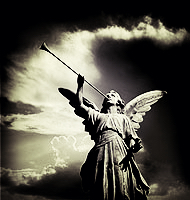
Fall on us and hide us from the face of the one who sits on the throne and from the wrath of the Lamb, because the great day of their wrath has come and who can withstand it. (Rev 6:16-17)
What John sees next is the marking of the foreheads of the tribes of the Israelites. That is to say, this painful illumination appears to birth the whole body of Christ—Jew and Gentile. The result is, remarkably, a sudden “period of peace”:
When he broke open the seventh seal, there was silence in heaven for about half an hour. (Rev 8:1)
Now, the breaking of the seals are essentially a vision of the external realm, of great tribulations. But St. John has another vision later which, as we’ll see, appears to simply be another vantage point of the same events.
THE TRIUMPH OF THE IMMACULATE HEART
The vision I’m speaking of is the one we discussed earlier, the great confrontation between the Woman and the dragon. If we look back at the past four centuries, we can see that this confrontation has indeed brought about the labor pains of revolution, plagues, famine and two World Wars thus far. And then we read…
She gave birth to a son, a male child, destined to rule all the nations with an iron rod. Then war broke out in heaven; Michael and his angels battled against the dragon. The dragon and its angels fought back, but they did not prevail and there was no longer any place for them in heaven. The huge dragon, the ancient serpent, who is called the Devil and Satan, who deceived the whole world, was thrown down to earth, and its angels were thrown down with it. (Rev 12:7-9)
John therefore saw the Most Holy Mother of God already in eternal happiness, yet travailing in a mysterious childbirth. —POPE PIUS X, Encyclical Ad Diem Illum Laetissimum, 24
Is this “exorcism of the dragon” [10]cf. The Exorcism of the Dragon the fruit of  the so-called Illumination of Conscience? For if the Illumination is essentially the coming of God’s “light of truth” into souls, how can it not cast out darkness? What happens to anyone of us when we are delivered from the enslavement of sin, addictions, divisions, confusion, etc.? There is peace, a relative peace as a result of Satan’s power being greatly diminished. Hence, we read:
the so-called Illumination of Conscience? For if the Illumination is essentially the coming of God’s “light of truth” into souls, how can it not cast out darkness? What happens to anyone of us when we are delivered from the enslavement of sin, addictions, divisions, confusion, etc.? There is peace, a relative peace as a result of Satan’s power being greatly diminished. Hence, we read:
The woman was given the two wings of the great eagle, so that she could fly to her place in the desert, where, far from the serpent, she was taken care of for a year, two years, and a half. (Rev 12:14)
The Church is rescued and preserved, for a time, symbolized by three and a half years. But more importantly, through the graces of the Illumination, her reign of living in the Divine Will [11]cf. The Coming New and Divine Holiness on earth as it is in heaven will have begun—a period of relative peace in which she too will “learn obedience” and “grow and become strong, filled with wisdom” in preparation for her own Passion. This is the Triumph of the Immaculate Heart—the establishment of the reign of God in the hearts of those who will reign with Christ in the next era. The “two wings” of the great eagle, then, could symbolize “prayer” and “obedience”, and the “desert” simply God’s protection.
“God will purge the earth with chastisements, and a great part of the current generation will be destroyed”, but He also affirms that “chastisements do not approach those individuals who receive the great Gift of Living in the Divine Will”, for God “protects them and the places where they reside”. —excerpt from The Gift of Living in the Divine Will in the Writings of Luisa Piccarreta, Rev. Dr. Joseph L. Iannuzzi, S.T.D., Ph.D
THE TRIUMPH OF THE SACRED HEART
But this Triumph of the Immaculate Heart is distinguished from the Triumph of the Sacred Heart in that, like St. Juan Diego’s time, there must still come about the crushing of the “culture of death.” That is, this is only a relatively brief period of peace, a “half hour” says St. John. For after the Woman is given refuge in the desert, Scripture says…
… the dragon… took its position on the sand of the sea. Then I saw a beast come out of the sea with ten horns and seven heads. (Rev 12:18, 13:1)
There is the final battle yet to come between the kingdom of Satan, concentrated now into a “beast”, and the Kingdom of Christ. It is the last stage of the final confrontation between the Gospel and the anti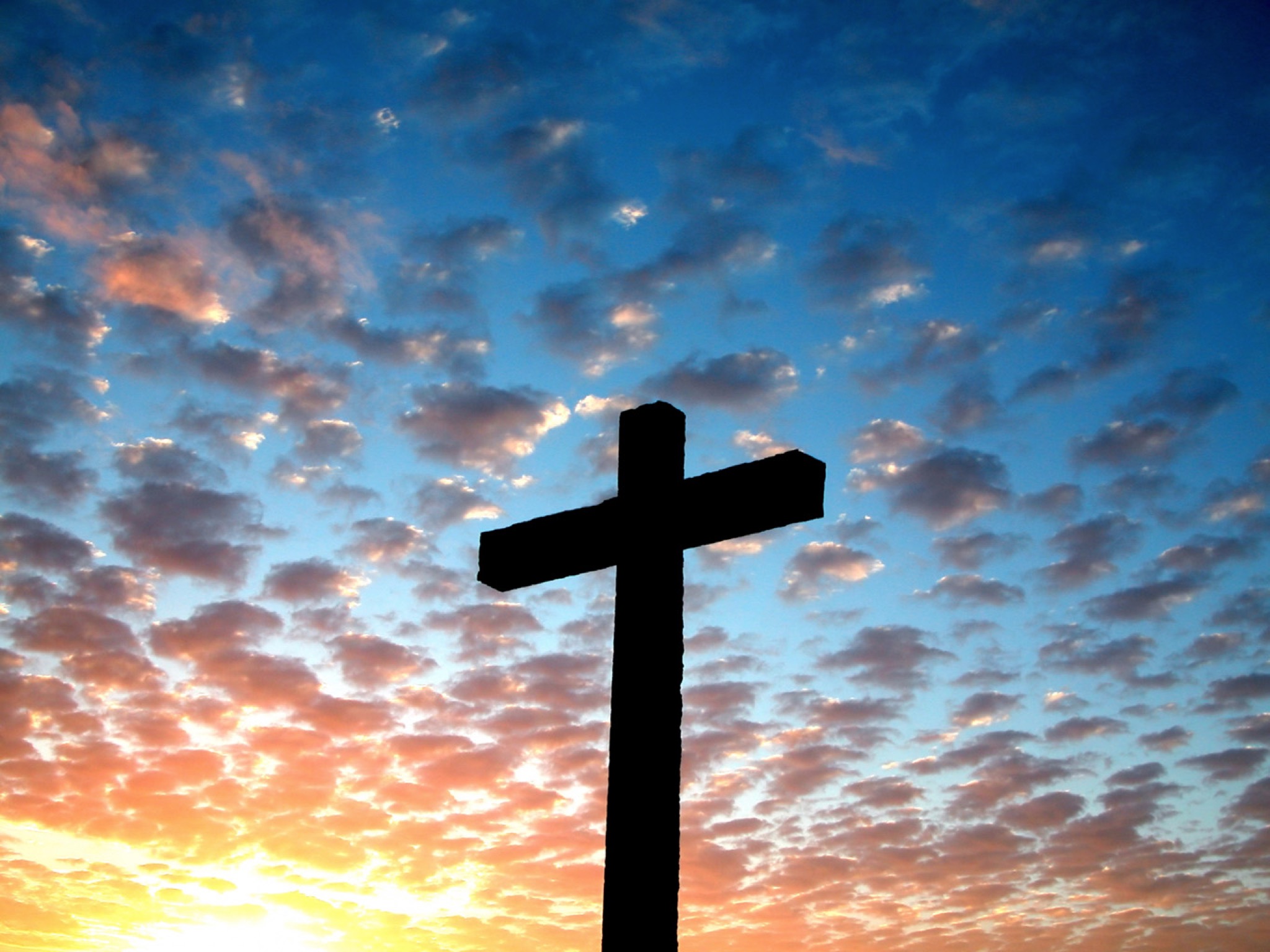 -gospel, the Church and the anti-church… Christ and the Antichrist. For just as Christ’s Triumph culminated on the Cross and was crowned in His Resurrection, so too, the second Triumph of the Sacred Heart will come about through the Passion of the Church, who will receive a crown of victory in what St. John calls the “first resurrection.” [12]cf. The Victors
-gospel, the Church and the anti-church… Christ and the Antichrist. For just as Christ’s Triumph culminated on the Cross and was crowned in His Resurrection, so too, the second Triumph of the Sacred Heart will come about through the Passion of the Church, who will receive a crown of victory in what St. John calls the “first resurrection.” [12]cf. The Victors
I also saw the souls of those wh o had been beheaded for their witness to Jesus and for the word of God, and who had not worshiped the beast or its image nor had accepted its mark on their foreheads or hands. They came to life and they reigned with Christ for a thousand years. (Rev 20:4)
The essential affirmation is of an intermediate stage in which the risen saints are still on earth and have not yet entered their final stage, for this is one of the aspects of the mystery of the last days which has yet to be revealed. —Cardinal Jean Daniélou (1905-1974), A History of Early Christian Doctrine Before the Council of Nicea, 1964, p. 377
This “intermediate stage” is what St. Bernard referred to as the “middle” coming of Christ in His saints:
The intermediate coming is a hidden one; in it only the elect see the Lord within their own selves, and they are saved… in his first coming Our Lord came in
our flesh and in our weakness; in this middle coming he comes in spirit and power; in the final coming he will be seen in glory and majesty… —St. Bernard, Liturgy of the Hours, Vol I, p. 169
The Church Fathers understood this to be an “era of peace”, a “sabbath rest” for the Church. It is the Eucharistic reign of Christ to the ends of the earth in every nation: the reign of the Sacred Heart.
This devotion [to the Sacred Heart] was the last effort of His love that He would grant to men in these latter ages, in order to withdraw them from the empire of Satan which He desired to destroy, and thus to introduce them into the sweet liberty of the rule of His love, which He wished to restore in the hearts of all those who should embrace this devotion. —St. Margaret Mary, www.sacredheartdevotion.com
This “rule of love” is the kingdom that several early Church Fathers spoke of:
We do confess that a kingdom is promised to us upon the earth, although before heaven, only in another state of existence; inasmuch as it will be after the resurrection for a thousand years in the divinely-built city of Jerusalem… We say that this city has been provided by God for receiving the saints on their resurrection, and refreshing them with the abundance of all really spiritual blessings, as a recompense for those which we have either despised or lost… —Tertullian (155–240 A.D.), Nicene Church Father; Adversus Marcion, Ante-Nicene Fathers, Henrickson Publishers, 1995, Vol. 3, pp. 342-343)
CONCLUDING THOUGHTS
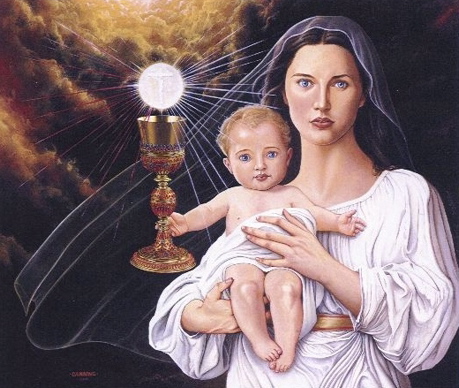 Now, what I have presented above is a variation from what I’ve written before insofar as I, along with several noteworthy theologians, have often conflated the Fatima promise of a “period of peace” to also refer to the “thousand years” or “era of peace”. Take for instance the renowned papal theologian Cardinal Ciappi:
Now, what I have presented above is a variation from what I’ve written before insofar as I, along with several noteworthy theologians, have often conflated the Fatima promise of a “period of peace” to also refer to the “thousand years” or “era of peace”. Take for instance the renowned papal theologian Cardinal Ciappi:
Yes, a miracle was promised at Fatima, the greatest miracle in the history of the world, second only to the Resurrection. And that miracle will be an era of peace which has never really been granted before to the world. —Mario Luigi Cardinal Ciappi, October 9th, 1994; papal theologian for Pius XII, John XXIII, Paul VI, John Paul I, and John Paul II; The Apostolate’s Family Catechism, (Sept. 9th, 1993); p. 35
However, since we are dealing here, not with Public, but so-called “private revelation”, there is room for interpretation as to what this “period of peace” is.
At present we see indistinctly, as in a mirror… (1 Cor 13:12)
However, what is clear in Scripture is that after the “great shaking” of the sixth seal, the doors of mercy appear to be wide open for a time—precisely what Jesus told St. Faustina that He would do: [13]cf. Opening Wide the Doors of Mercy
Write: before I come as a just Judge, I first open wide the door of My mercy. He who refuses to pass through the door of My mercy must pass through the door of My justice… —Divine Mercy in My Soul, Diary of St. Faustina, n. 1146
Through Our Lady’s intervention, Heaven’s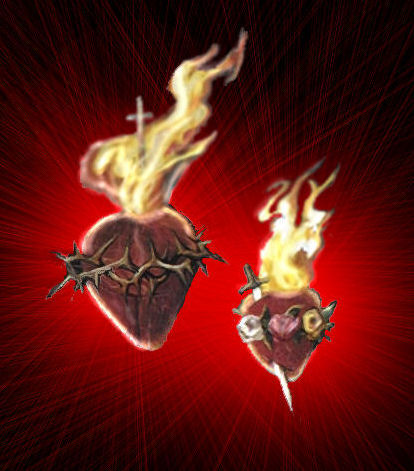 judgment of the earth seems to pause before a final chastisement—that of the “beast”—after which the King of kings and Lord of lords comes to put an end to the final confrontation of this era, and chain Satan for a time. [14]cf. Rev 20:2
judgment of the earth seems to pause before a final chastisement—that of the “beast”—after which the King of kings and Lord of lords comes to put an end to the final confrontation of this era, and chain Satan for a time. [14]cf. Rev 20:2
The two Triumphs are the work of the Two Hearts of Jesus and Mary to establish His reign on earth. The Triumphs are not independent of one another, but are as unified as much as dawn’s light is linked to the rising of the sun. Their Triumph’s form one great victory, which is the salvation of mankind, or at least, those who put their faith in Christ.
Mary is as the dawn to the eternal Sun, preventing the Sun of justice… the stem or rod to the eternal flower, producing the flower of mercy. —St. Bonaventure, Mirror Of The Blessed Virgin Mary, Ch. XIII
* The images of Our Lady with the child Jesus and the Eucharist, and the Two Hearts are by Tommy Canning.
Thanks for supporting this full-time ministry.
This is the most difficult time of year,
so your donation is greatly appreciated.
Mark plays the gorgeous sounding
McGillivray hand-made acoustic guitar.
Footnotes
| ↑1 | for a detailed explanation of the Triumph of the Immaculate Heart, see the The Triumph – Part I, Part II, and Part III |
|---|---|
| ↑2 | cf. Eph 1:10; Col 1:20 |
| ↑3 | Catechism of the Catholic Church, n. 494 |
| ↑4 | cf. Redemptoris Mater, n. 22 |
| ↑5 | cf. Millenarianism—What it is, and is Not |
| ↑6 | Heb 5:8 |
| ↑7 | Luke 2:40 |
| ↑8 | cf. Matt 24:7-8 |
| ↑9 | cf. The Flaming Sword |
| ↑10 | cf. The Exorcism of the Dragon |
| ↑11 | cf. The Coming New and Divine Holiness |
| ↑12 | cf. The Victors |
| ↑13 | cf. Opening Wide the Doors of Mercy |
| ↑14 | cf. Rev 20:2 |


